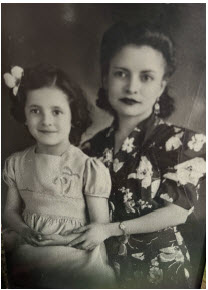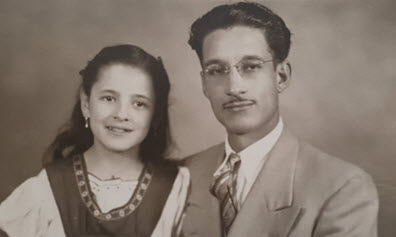My mother’s immigration story
Tue. November 15, 2005Categories: Uncategorized
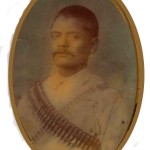
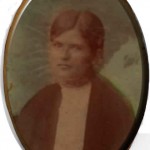 I imagine that my great grandparents died fighting for “Reforma, Libertad Ley y Justicia” (Reform, Freedom, Law and Justice) under Emilio Zapata.
I imagine that my great grandparents died fighting for “Reforma, Libertad Ley y Justicia” (Reform, Freedom, Law and Justice) under Emilio Zapata.
Zapata was influenced by Peter Kropotkin (born in Moscow, 1842) at a time of rich intellectual growth in Russia. Kropotkin, a student of French history, came under the influence of the new liberal-revolutionary literature to became the founder of anarchist communism. At least that’s what I tell myself.
During the Mexican Revolution, my great-grandparents and most of their children were killed. My 3 year old grandmother, Marguerite, survived. I am named after her. She came to Los Angeles hidden in the arms of one of her aunts, named Amada, who was traveling with Uncle Guadalupe and Aunt Frances. The borders were more permeable then. I do not know what happened to Uncle Guadalupe, but it was Aunt Frances who raised my grandmother (beautiful, fun-loving Aunt Amada was in and out, here and there). 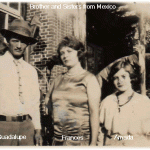 Marguerite was so unhappy that she eventually ran away from Aunt Frances but she was found out and placed in a convent. My grandmother decided to become a nun, and she was quickly removed from the convent by Aunt Francis. Marguerite had a relationship with Ramon Barrios, who was a teacher at her high school, my mother said, and whose family had a performing arts theater. That secret just slipped out one day. Ramon took Marguerite to Nogales, Sonora in 1932 where his family was and left her.
Marguerite was so unhappy that she eventually ran away from Aunt Frances but she was found out and placed in a convent. My grandmother decided to become a nun, and she was quickly removed from the convent by Aunt Francis. Marguerite had a relationship with Ramon Barrios, who was a teacher at her high school, my mother said, and whose family had a performing arts theater. That secret just slipped out one day. Ramon took Marguerite to Nogales, Sonora in 1932 where his family was and left her.
My grandmother met a distinguished-looking man, Alfredo Salazar. Marguerite gave birth to my mother in Nogales, Sonora in 1934 and afterwards mother and daughter returned to L.A. (1935). My under-nourished mother arrived in California just a few months old. Aunt Frances’ husband, Louis B. Aguirre, immediately had my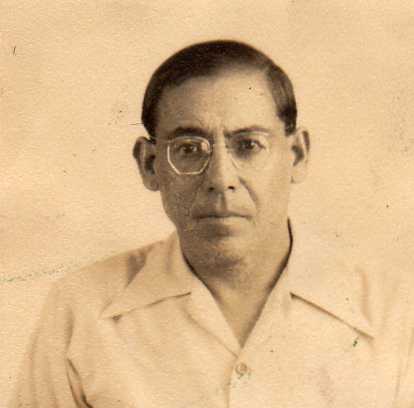 mother hospitalized to ensure her survival (she was placed in an incubator).
mother hospitalized to ensure her survival (she was placed in an incubator). 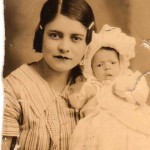
Alfredo Salazar had a good business in Mexico and disliked the thought of living in the States. Consequently, there were annual train rides to Nogales to visit the Salazar’s who, likewise, visited L.A. pretty regularly. This I do recall. They were a handsome family, the Salazar’s in Nogales.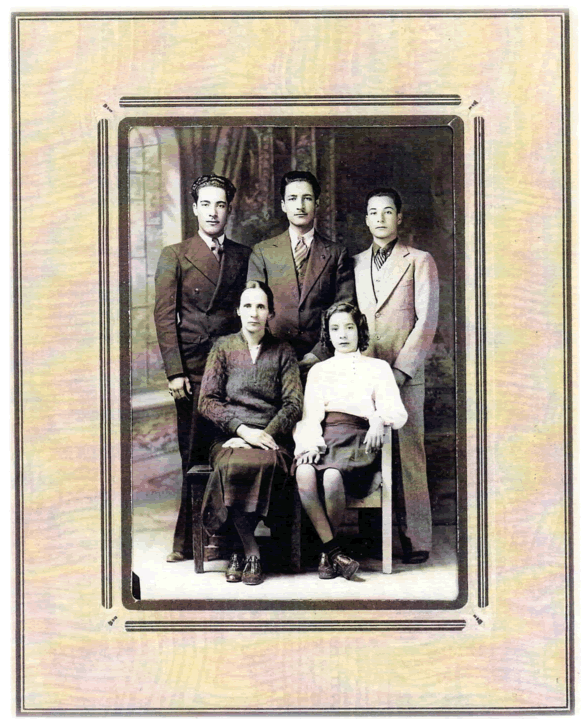
Marguerite’s job at a small grocery store, which she took great lengths to arrive at everyday, did not pay enough to support both mother and child, so my mother lived with Aunt Frances, just like her mother did, until she was six years old. She did see her mother on weekends, though. Unfortunately, Aunt Frances was a complicated woman with issues of her own. Although tolerant of children I recall her being unkind to us. My mother reports she was abusive, both physically and verbally, even though she was possessive of both my grandmother and my mother. Things changed for my mother between the ages of 6 and 11 after she began school. She was able to move in with her mother and live as a happy but lonely “latchkey kid”. The firefighters at the station across the street looked out for her while she sat on the curb waiting for her mother to come home.
Around this time, Marguerite fell in love with Issaia Vasquez (aka Chuck), who had joined the Army. 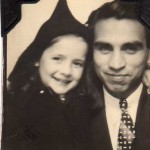 When he finally got out of the Army, they married and made a home in Boyle Heights for about one year until heartbreak struck the happy young family. Marguerite’s abdomen swelled up and I imagine that she was in great pain. She sought the advice of a curandera who mistakenly treated her for a pregnancy when it was a kidney infection. I have tried to understand what it must be like to live in two worlds as the same time. Grandmother, even though having lived in LA most of her life, followed a different set of cultural beliefs, but maybe that is what it means to be an Angelino. It was a huge loss for my mother and I, too, missed out on a grandmother’s love. My mother told me of Chuck’s tears at her mother’s bedside when she died. He was inconsolable. My mother was eleven years old and did not know who her true father was until at Marguerite’s graveside when it was hinted that the man she believed was her Uncle Alfredo was actually her father. It is not the first time I had heard of this sort of thing.
When he finally got out of the Army, they married and made a home in Boyle Heights for about one year until heartbreak struck the happy young family. Marguerite’s abdomen swelled up and I imagine that she was in great pain. She sought the advice of a curandera who mistakenly treated her for a pregnancy when it was a kidney infection. I have tried to understand what it must be like to live in two worlds as the same time. Grandmother, even though having lived in LA most of her life, followed a different set of cultural beliefs, but maybe that is what it means to be an Angelino. It was a huge loss for my mother and I, too, missed out on a grandmother’s love. My mother told me of Chuck’s tears at her mother’s bedside when she died. He was inconsolable. My mother was eleven years old and did not know who her true father was until at Marguerite’s graveside when it was hinted that the man she believed was her Uncle Alfredo was actually her father. It is not the first time I had heard of this sort of thing.
I want to add a note about my father’s side of the family: As I got to know my dad better in adulthood, I told him that I thought he was of Scotch-Irish heritage but he denied it, nevertheless my beliefs were reified after I visited his childhood home on Greasy Creek in Pikeville, Kentucky and more so from results from Ancestry.com. The McCoy’s lived in Pikeville to escape the raiding Hatfields from West Virginia. My paternal grandmother’s surname was Coleman. 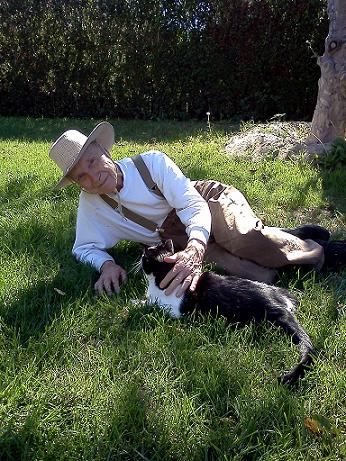 Come to find out Coleman is of Irish and English origin. Our branch of the Coleman family lived in the coal mining mountains of Appalachia. Also, our surname “Blackburn” is an English occupational name for a burner of charcoal or gatherer of coal. I find it interesting that there are more than 100 saints named Coleman in Ireland, but that is another story. It’s true what they say about hillbillies. Sitting around the kitchen table in Greasy Creek with those relatives, I listened to crazy stories while eating homemade biscuits served with molasses boiled with baking soda. Super-delicious! Having been raised in Southern California in the ’60’s, this way of seeing the world was dystopic to me. I chuckled when my great cousin, who would have been my grandmother’s age, suspiciously intimated that I did not look like “them” (did I imagine that sneer on her face…is that where I got mine?) Knowing their fear of outsiders, I told her that I was a half-breed, to which she gave a hearty laugh. Humor calmed my worries (and hers, too). When I told this story to an acquaintance in L.A. he chuckled and said “You’re a hicspic!” He later denied having ever said it, but I remember the label because it was clever.
Come to find out Coleman is of Irish and English origin. Our branch of the Coleman family lived in the coal mining mountains of Appalachia. Also, our surname “Blackburn” is an English occupational name for a burner of charcoal or gatherer of coal. I find it interesting that there are more than 100 saints named Coleman in Ireland, but that is another story. It’s true what they say about hillbillies. Sitting around the kitchen table in Greasy Creek with those relatives, I listened to crazy stories while eating homemade biscuits served with molasses boiled with baking soda. Super-delicious! Having been raised in Southern California in the ’60’s, this way of seeing the world was dystopic to me. I chuckled when my great cousin, who would have been my grandmother’s age, suspiciously intimated that I did not look like “them” (did I imagine that sneer on her face…is that where I got mine?) Knowing their fear of outsiders, I told her that I was a half-breed, to which she gave a hearty laugh. Humor calmed my worries (and hers, too). When I told this story to an acquaintance in L.A. he chuckled and said “You’re a hicspic!” He later denied having ever said it, but I remember the label because it was clever.
